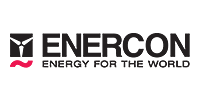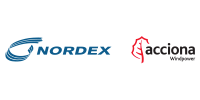11:30 - 13:00 Turbines operating in low temperatures
Turbine technology


Room: Hall G2
Cold climate sites are characterised by the occurence of icing events and/or periods with temperatures below the operational limits of standard wind turbines. This session will address specific challenges faced during the operation of wind farms in cold climates. Topics include low-temperature compliance testing of wind turbines, methods for detection and analysis of icing events, as well as the operational performance of de- and anti-icing systems.
You attended this session?
Learning objectives
- Learn about the importance of the increasing market share of cold climate wind turbines and the effect of such environment on wind turbine components;
- Gain insights in the behaviour of certain critical components in (extreme) low temperatures, its cold start-up performance and potential failure modes which have to be taken into account during design;
- Get an overview about icing basics and ice detection systems for wind turbines;
- Learn about tools used for modelling the thermal behaviour of a blade and respective de- and anti-icing system;
- Understand the uncertainties related to them, the methodology for their validation and the application.
Additional speakers to be confirmed.
Co-chair(s):

Presenter

Nordex Energy GmbH, Hamburg, Germany
Presenter's biography
Biographies are supplied directly by presenters at WindEurope Summit 2016 and are published here uneditedNils Lehming has more than 6 years’ experience on wind energy in cold climate and has gained international experience in engineering, project-, and product management over the last 13 years. He is currently a Senior Product Manager for the Nordex 3 MW turbine platform and specialized on cold climate as well the rotor blade anti-icing system. He is based in Hamburg and working for Nordex Energy GmbH since 2010. Nils is a Business Engineering graduate from Lübeck University of Applied Sciences and has been awarded a Bachelor of Science degree from Milwaukee School of Engineering.
Abstract
AbstractOperational experience of Wind turbines in Cold Climate
Introduction
A great number of locations can be found all over the world where low temperatures following icing events are frequent, being those locations as well usually windy. To take advantage of such places, wind farm developers are looking for wind turbines with systems able to minimize energy losses caused by ice-related non-availability and power curve degradation.
Several types of devices are conceived for this purpose, namely active systems (anti-icing or de-icing) or passive systems like coatings.
Nordex Energy started the development and field validation of thermal resistance heated blades in 2010. The system works mainly as an anti-icing system, but can be used also for de-icing purposes.
Today Nordex has 382MW anti icing turbines in operation and 156MW under construction. In the past several field measurement campaigns have been conducted to evaluate the performance and benefits of the thermal resistance anti icing system.
Approach
From the first prototypes in 2010 until the latest installations there have been many iterative steps undertaken to improve the robustness and performance of the Anti-Icing system. These iterative steps were backed up by measurement campaigns using a reference turbine with no or deactivated anti-icing system to verify the performance differences. These measurements were done in collaboration with one of the leading companies in wind measurement and analysis specialized on wind power in cold climate regions.
Main body of abstract
Learn about the key features of the anti-icing system and how the ice detection control strategy works that is triggering the efficient need based heating of the rotor blades.
Based on the installed fleet an overview is given which iterative steps have been undertaken to improve the reliability and production quality of the anti-icing system by means of laboratory and field tests.
In conclusion the field validation results on different turbine types and cold climate sites in northern Europe will be discussed. What are the gains in AEP under icing conditions and how is the power curve affected when the anti-icing system is deactivated compared to an active anti-icing system.
Conclusion
Today’s Nordex anti-icing system has reached a matured state which can be considered as proven technology with a confirmed track record. The reduction of icing on blades with the Anti-Icing system provides a significant production gain and a substantial improvement of the power curve under icing conditions. This opens up the path to provide an anti-icing performance warranty which is meanwhile a common request in the wind power industry.





Follow EWEA on: